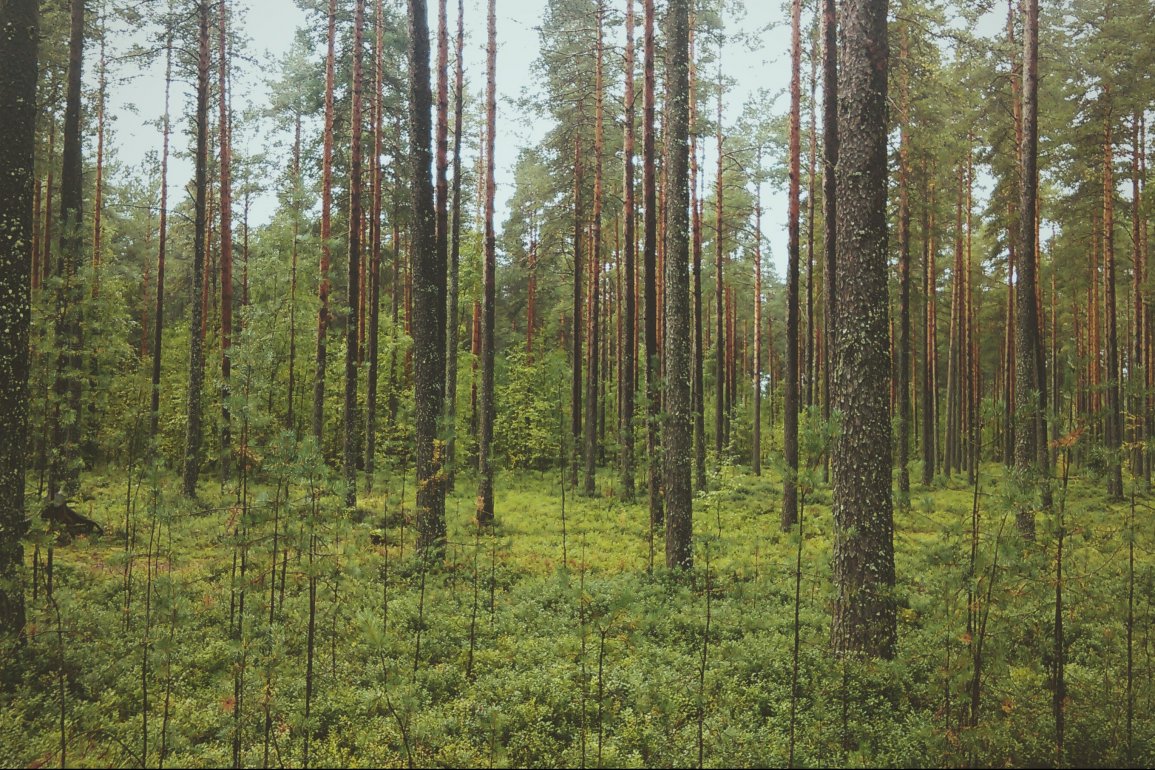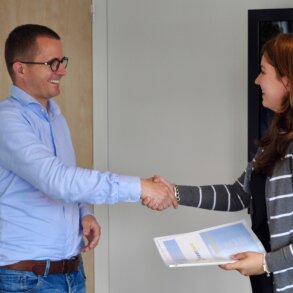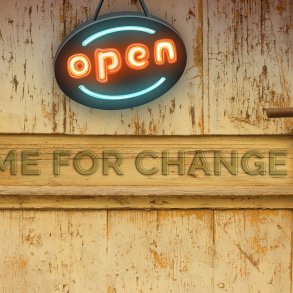By Chris Clark for Enlivening Edge
As a brittle economic monoculture begins to collapse and a more equitable culture takes shape, expect resilient, diverse, and wildly creative networks to emerge.
In his piece “Resist and Thrive,” Kickstarter CEO Yancey Strickler explores the implications of today’s money monoculture — or as he puts it, “what happens when a culture is driven by the need for money to make more money.”
He uses real estate as an example. From the article:
“As investors and developers churn through properties, there’s a significant impact on the communities that actually live and work there. For families and neighborhood businesses, they must significantly increase how much money they make or they have to leave. No matter their importance to their community, they can’t stay if they can’t pay. And few can.
What happens when these businesses leave? New businesses that can maximize how much money they generate move in. And these businesses are, inevitably, chains. Fast food, retail, banks, and others whose operational mantra is based on capital efficiency. Investors make money, franchises notch a new location, and the neighborhood suffers a significant death…
Local businesses that serve their communities are going extinct.
Behind this dynamic is a monoculture of money optimizing for more money. An investment mentality that hollows out our culture. Real estate is just one example. It’s happening across many segments of our society. And in each case, the existing community pays the price for the investor’s upside.”
Monocultures occur in nature: for example, after a forest fire. But their reign is short-lived. Over time, monocultures yield their supremacy to something else entirely. Maybe the same thing is about to happen in the economic monoculture which has sprung up in the last century?
I see parallels between the increasingly hostile, paranoid, and competitive business environment Yancey describes and what happens after the first species gain a foothold in the wake of a forest fire. These are the “opportunistic” species – grasses, for example – benefiting from a super-abundance of nutrients left behind in the soil. These species quickly create a monoculture.
I think it’s more than an analogous coincidence that our modern economic paradigm was built on an assumption of super-abundant resources and enabled by extractive technologies, leading to an exploitive monoculture. And I don’t think it’s coincidence that adherents to this paradigm are beginning to question it. Very quickly, opportunistic grasses can transform a blackened landscape into a carpet of green; industrialism created more wealth in the Northern Hemisphere than ever before.
But after the rise of the monoculture, two things happen.
First, these sun-loving opportunists reach a maximum. It’s harder and harder for new grasses to find purchase; growth, once exponential, now stabilizes. If the grasses were concerned about maintaining their growth curve, they might be tempted to imagine ways to start a fire in the forest next-door, to create their next opportunity.
Instead what happens is they provide shade for the plants that will eventually kill them.
Shade-tolerant shrubs, their seeds dormant and waiting in the wake of the fire, now find a nice little space to call their own among the tall stalks (high-rises) of the opportunists. In this incubating darkness, they grow large enough to establish their roots in the crowded soil.
An interesting thing about these shrubs, and the conifers that will eventually replace them, is that they grow much more slowly than the opportunists. As organisms they are more complex, and they can do more with less. When the shrubs give way at last to conifers and broad-leafed trees, these species are even slower-growing, far more efficient, and stable. It takes a catastrophic event, like a forest fire or climate change, to bring a forest back down to zero.
Forests are climax communities, and they share the following characteristics:
- Resilience: because climax communities are so complex, they can mount a fantastic range of responses to change in their environment.
- Diversity: succession species, like conifers, create the conditions for a huge variety of species to thrive and flourish beneath their boughs.
- Energy Equilibrium: climax communities restore and distribute the resources they use back to the environment, capturing sunlight, and filtering that energy down through stages of the forest through litter-fall and decomposition. There is nothing wasted in a climax community.
These three characteristics seem like a pretty good set of criteria for the future of business we might imagine for the twenty-first century. We’re in that phase-shift between opportunists and their successors. Let’s give the former a hand: incredible wealth now frames the next stage with opportunity. More and more, we’re seeing shade-loving, complex, creative, and egalitarian organizations emerging from the shadows. I believe Kickstarter is an incredibly positive example of this (for fun, Exhibit A: the resurrection of MST3K). Kickstarter crowd-sources funding with a minimum of centralized control: an entirely new means of organization removing the gatekeepers of good ideas and returning that power to the whole.
And then there are the suddenly-sprouting seeds of the “teal movement,” coined by Frederic Laloux in Reinventing Organizations, (full disclosure, I worked with Fred to spark the fledgling wiki based on his book). These are new self-managing organizational forms, like Holacracy, bridging the gap between the traditional “opportunist” species of management, and their successors. B-Corps. Conscious Capitalism. Public Benefit Corporations. All emerging in the nascent decade.
The species of organizations embodying these forms are all paying attention to a much wider field of view than their opportunistic counterparts. They’re tackling a level of complexity several orders of magnitude higher than most modern corporations are capable of. These organizations represent a new stage in our economic evolution, and it’s no coincidence that they share similar qualities with climax communities:
Resilience
In the midst of change, who thrives? It isn’t the organization best adapted to a particular environment – it’s the adaptable.
Anyone who’s worked for any length of time in a corporate bureaucracy knows all too well how slowly these systems adapt to change. Why? Because these organizations are optimized for a world they can predict and control.
That world is ending. In most large corporations, information reaches executive decision-makers too slowly and becomes so filtered by levels of management that what appears in the eventual powerpoint presentation seldom resembles reality. Under these conditions, how can an organization sense and respond to change in its environment to mount a timely, appropriate response? Most organizations that survive under this paradigm have access to so much capital that they can afford to buy innovators, thereby expanding their viability. But the speed of change may soon outdistance even these capital reserves.
Conversely, self-managed organizations, like those described by Laloux, are quite flexible; decision-making is distributed, and more stakeholders are considered when crafting solutions. This allows organizations to respond much more rapidly and appropriately to change. Indeed, unlike command-and-control organizations, ongoing evolution is a way of life in a self-managed organization.
Diversity
Mature climax communities are diverse. Lots of species work in harmony to fulfill their particular ecological niche. Unlike a monoculture, where the capacity for only a handful of strategies exist, a diverse ecosystem is capable of mounting an exponentially wider set of responses to change.
Today’s economic monoculture is extremely sensitive to perturbation because it prioritizes growth above all else. Because growth is prioritized, the only options considered in times of crisis are to either cut or stimulate spending. Rather than consider a diverse range of purposes and stakeholders, controllers are held hostage to institutions grown too big to fail. “How can we ward off the inevitable downturn as long as possible?” Stimulus and austerity only go so far. When these solutions reach their limit, the result is economic collapse.
What’s become clear in the wake of the Great Recession is how untenable the “growth at all costs” mindset truly is. The next phase of organizations are orienting themselves to higher purpose, and that makes all the difference. Why? Because a purpose higher than growth motivates diversity. When you orient yourself to purpose, your options expand to include what was previously unthinkable.
Consider electric car company Tesla. In 2014 the company gave away its patents, effectively open-sourcing its technology to competitors. This move confounded traditionalists, among them companies who spend billions defending their patent rights. But Tesla’s founder, Elon Musk, is playing a different game:
“I had a slight existential crisis. I was trying to figure out what it all means. What is the purpose of things? I came to the conclusion that if we can advance the knowledge of the world, if we can do things that expand the scope and scale of consciousness, then we’re better able to ask the right questions and become more enlightened. And that’s really the only way forward.” – Elon Musk, Caltech commencement speech
Equilibrium
What will happen in the wake of Tesla giving away its patents? Potentially, Tesla is jump-starting the birth of an entire ecosystem. Unlike the protectionists, who slow down innovation by patenting their intellectual property, Tesla is orienting towards a purpose that does not consider competition the enemy. Instead, they see their peers in the automotive business as partners, collaborating towards a purpose.
In effect Musk is saying the car companies are not his competition. They aren’t. Ford, GM, Fiat and even hybrid savvy Toyota are not competition… It’s not the companies that are the competition, it’s the internal combustion engine itself that is Tesla Motors’ competition and he is not beating it, yet… as Musk’s says, his sales are only a splash in the ocean in comparison to the vast fleets of gas fueled cars being shelled out of giant factories around the globe by the millions. – Forbes
In a climax community, nothing is wasted. Resources are shared and distributed. Mother Nature has experimented with enough forms over three-plus billion years that we would do well to take a page from her book.
“Consider the cherry tree: thousands of blossoms create fruit for birds, humans, and other animals, in order that one pit might eventually fall onto the ground, take root, and grow. Who would look at the ground littered with cherry blossoms and complain, “How inefficient and wasteful!” The tree makes copious blossoms and fruit without depleting its environment. Once they fall on the ground, their materials decompose and break down into nutrients that nourish microorganisms, insects, plants, animals, and soil. Although the tree makes more of its “product” than it needs for its own success in an ecosystem, this abundance has evolved (through millions of years of success and failure or, in business terms, R&D), to serve rich and varied purposes. In fact, the tree’s fecundity nourishes just about everything around it.” — McDonough and Braungart, Cradle to Cradle
McDonough and Braungart are making the case for “remaking the way we make things,” applying the notion that we can create systemic value in everything from engineering to industry. Why not our economy? Why not our politics?
Far from being a crazy one-off gambit, Musk’s Tesla may simply be an early-adopter of those business strategies that ultimately create more value for the world than mere profit for shareholders – a strategy grown increasingly viable as the opportunists of the industrial age, the growth-oriented giants of a money monoculture, begin their slow fall.
So is the future looking very bright? If what we want is a resilient, responsible, and equitable world, I’d say instead (and thank goodness,) it’s looking shady.
Chris Clark partnered with Frederic Laloux and others to create the Reinventing Organizations Wiki, and Discourse sites. He lives in the shadow of the mountains near Seattle, Washington, helping guide organizations near and far transitioning to teal structures and practices.





